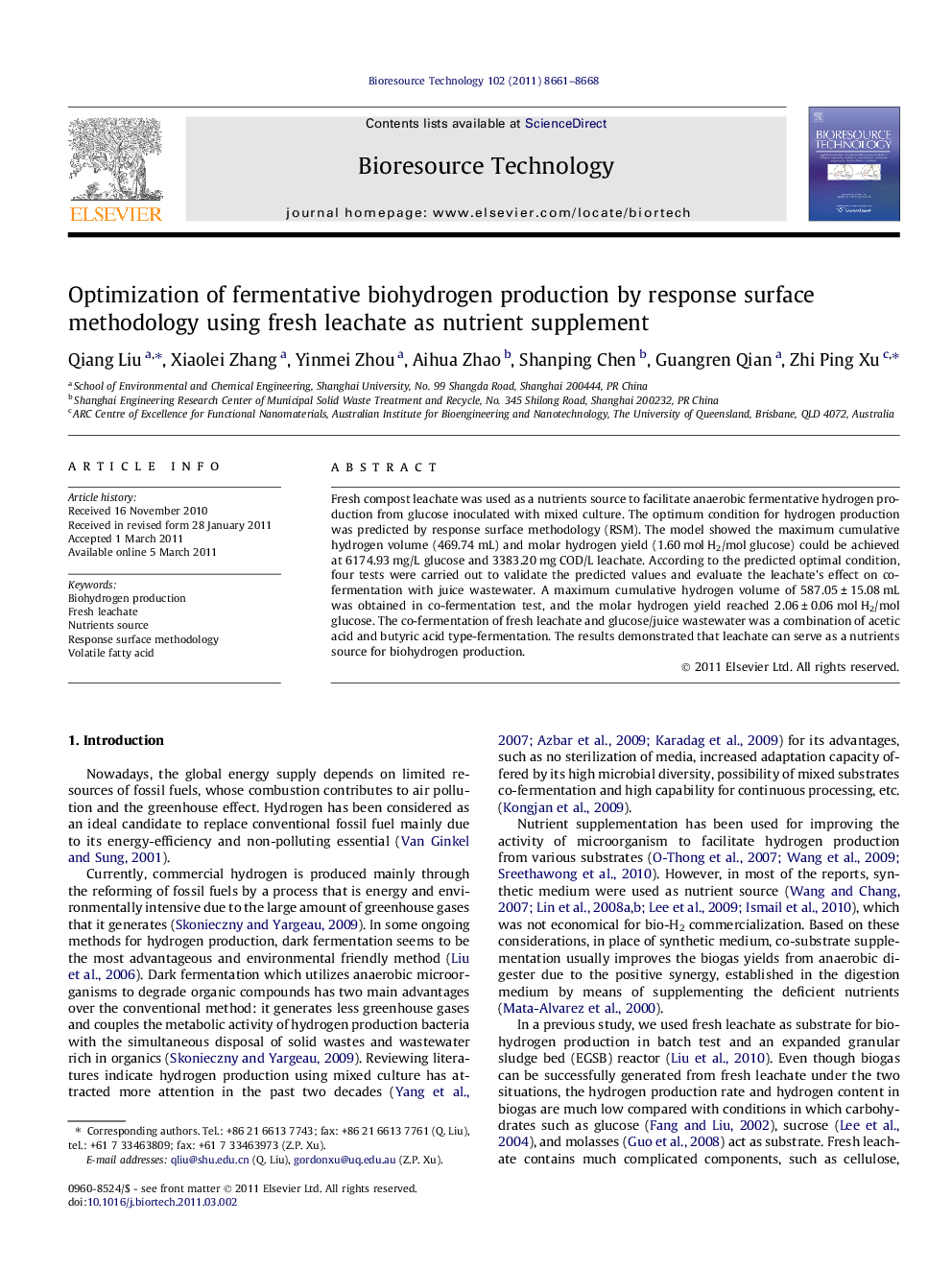| Article ID | Journal | Published Year | Pages | File Type |
|---|---|---|---|---|
| 681791 | Bioresource Technology | 2011 | 8 Pages |
Fresh compost leachate was used as a nutrients source to facilitate anaerobic fermentative hydrogen production from glucose inoculated with mixed culture. The optimum condition for hydrogen production was predicted by response surface methodology (RSM). The model showed the maximum cumulative hydrogen volume (469.74 mL) and molar hydrogen yield (1.60 mol H2/mol glucose) could be achieved at 6174.93 mg/L glucose and 3383.20 mg COD/L leachate. According to the predicted optimal condition, four tests were carried out to validate the predicted values and evaluate the leachate’s effect on co-fermentation with juice wastewater. A maximum cumulative hydrogen volume of 587.05 ± 15.08 mL was obtained in co-fermentation test, and the molar hydrogen yield reached 2.06 ± 0.06 mol H2/mol glucose. The co-fermentation of fresh leachate and glucose/juice wastewater was a combination of acetic acid and butyric acid type-fermentation. The results demonstrated that leachate can serve as a nutrients source for biohydrogen production.
